Colonial Mexico: 7 Standout Cities and Towns
All over Mexico, you’ll find towns with gorgeous, historic centers filled with ornate Baroque buildings and elegant plazas. Our nomads share a few of their favorites.
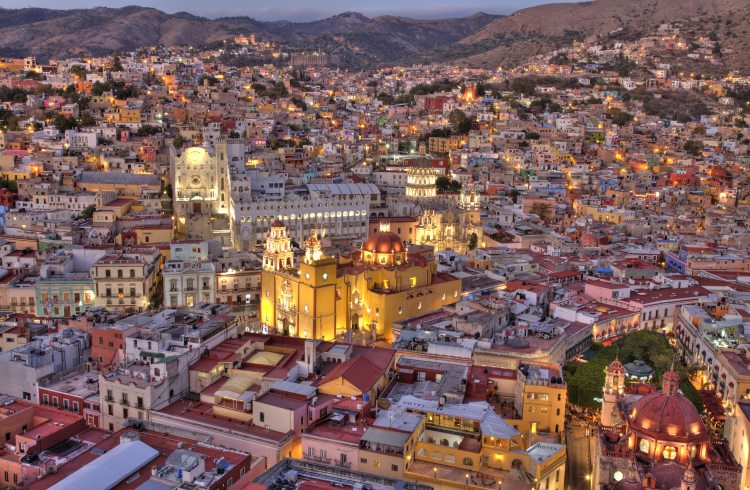 Photo © Getty Images / Jose Girarte
Photo © Getty Images / Jose Girarte
Guanajuato
If you’re considering travel to Central Mexico, you’ve almost certainly added San Miguel de Allende to your itinerary. It’s a great little town – but allow me to make the case for Guanajuato, a UNESCO World Heritage Site tucked away in San Miguel’s shadow. It's largely devoid of the crowds of international visitors you’ll find in other, more popular Mexican cities, yet still packed with a full slate of interesting opportunities ripe for exploration. Set on a hill is its most famous attraction: the largest collection of mummies in the Western Hemisphere. The Museo de Las Momias features more than 100 entombed specimens, and is well worth a visit, especially if you use it as an excuse to fortify yourself with a michelada (beer and tomato juice cocktail) beforehand.
Less ghoulishly, Guanajuato is also home to Cervantino, one of Mexico’s premier cultural festivals. Even if you miss the main event itself, held every October, that creative, youthful vibe extends daily into the central Jardin de la Union, where students sip coffee by day and cerveza by night. Music will follow your every step, leading you past the famous Teatro Juarez, where on a near-nightly basis you can expect world-class performances across dance, drama, puppetry and more. Across the city, colonial architecture abounds, and other wonderful examples of 17th, 18th, and 19th-century masterpieces include the Teatro Principal, Plaza de la Paz, and the iconic yellow Basilica cathedral.
Guanajuato’s streets are perfectly strollable, and right upon your arrival by car or bus, you’ll understand why; much of the traffic is routed through the cavernous tunnels running under the city, which leaves the streets largely empty of vehicles.
On my first visit, that kind of aimless exploring brought me to my favorite place in Guanajuato: the local baseball stadium, a short 20-minute walk from downtown. Head here on a sunny afternoon for a game, complete with cold beer and chicharon (fried pig skin, it’s delicious, trust me) sandwiches filled with avocado, hard-boiled egg, and hot sauce. Colorful houses rise on a hill above the outfield, making a dramatic backdrop to the sporting action.
A five-hour bus ride from CDMX, Guanajuato is my favorite city in Mexico. For a taste of bohemian, laid-back university life, this is the place to go. - Dan Pierson
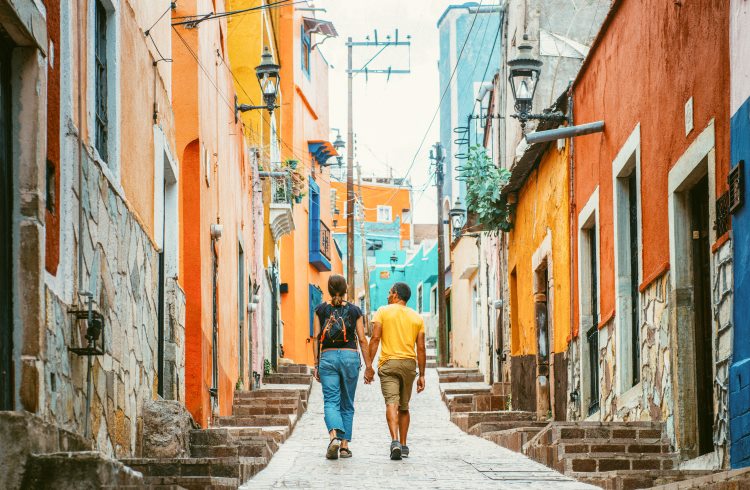
Taxco de Alarcón
Taxco is blessed with both magnificent colonial architecture and stunning natural geography. The two combine to make it one of the most picturesque cities in Mexico, yet surprisingly it does not yet draw huge numbers of tourists.
Built with the wealth of the local silver mines, its inhabitants used their riches to build opulent whitewashed mansions for themselves. These weave around the steep contours of the hillside on which the city is built, before stopping abruptly at the cliff-like edge of the valley below.
To fully appreciate the city’s grandeur, I head uphill to the El Cristo statue. The spectacular views begin as soon as I emerge from the warren of narrow streets, and as I climb they get better and better. Most eye-catching is the Santa Prisca church, with its ornate towers and colorful dome. Framed by the folds of the surrounding hills, it looms dramatically over Taxco’s historic streets. - Max Serjeant
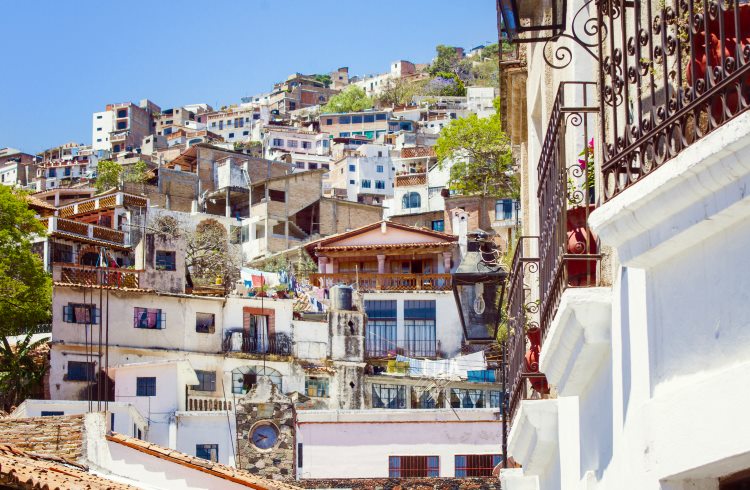
Querétaro
Officially named Santiago de Querétaro, but called simply “Querétaro,” this town is proof the original spirit of Mexico thrives in its geographic heart. I moved here because I wanted to experience the real Mexico, unlike the version cultivated for tourists in other parts of the country. While researching potential cities to live in, I failed to find much information about Querétaro. That lack of guidebooks and blog posts only made me want to move here more.
Querétaro's relative anonymity is a bonus to visitors, too. In the rush of tourism to nearby San Miguel de Allende, travelers somehow overlook Querétaro. It's a bit surprising, since Querétaro's historic city center is a prime example of the magnificent colonial architecture that made its neighbor a must-see destination. Every day, I walk out my front door and into the shadow of Templo de la Merced. If I'm ever lost in the city, I simply look for the crimson dome – freshly painted the week I moved in – and follow it home.
Querétaro is often referred to as the “pride of Mexico” for its high quality of life, strong economy, and overall safety. Despite having over a million residents, the historic center of the city still has a small-town feel. You can drink in traditional cantinas, shop in working markets like Mercado La Cruz, and engage with hospitable queretanos who still find foreigners a relative novelty. My first week in Querétaro, I managed two of the three when, after realizing I was a foreigner, the chicken stall owner gifted me four coffee cups for my new home. I drink coffee in my mug every morning, buy chicken from Fernando every week, and am grateful to live in Querétaro every day. - Alex Wittman
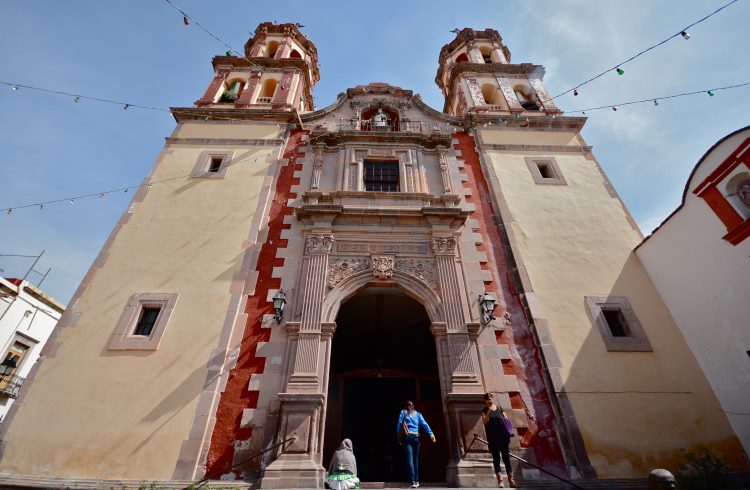
Campeche
Standing on the thick, fortified walls that surround Campeche’s historic center, gazing out into the Gulf of Mexico, I can almost fool myself into seeing the British pirate ships that once laid siege to the city. The walls – and a pair of nearby forts – did their job and today the heart of Campeche is a UNESCO World Heritage Site. It is home to wonderfully preserved Baroque churches, shady plazas where time appears to stand still, and 18th- and 19th-century pastel-shaded houses that look like they’ve been plucked from the pages of a Gabriel García Márquez novel. Despite its history, Campeche, capital of the state of the same name and located on the western flank of the Yucatán Peninsula, is not stuck in the past. Modern sculptures line many of the narrow, cobbled streets and lively seafood joints are strung along the malecón, the city’s waterfront promenade. - Shafik Meghji
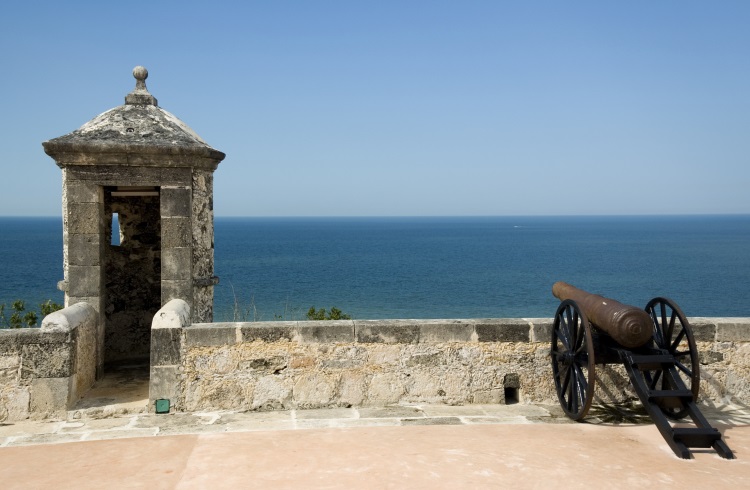
Xilitla
In Mexico, nature is very much a part of the architecture, and nowhere is that more evident than Xilitla's Las Pozas.
Located in San Luis Potosí's share of the Sierra Gorda mountain range, Xilitla is a pueblo mágico (magic town) that served as a hub of Augustine missionary activity in the mid-1500s, but the pride of Xilitla lies just the city limits.
Las Pozas attracts visitors from all over the country who come to marvel at its whimsical fusion of nature and art. In the 1940s, British poet Edward James went to Mexico in search of a place to build his own “Garden of Eden” where he could pay tribute to his love of surreal art. Having fallen in love with the fantastical work of surrealist Salvador Dalí while living in Spain, I knew I had to see this grand homage for myself. The wild mountain rain forest, stunning waterfalls, and crystalline natural pools around Xilitla were the perfect settings for the Edward James Sculpture Garden.
With more than 30 structures across 20 acres of jungle, deciding where to focus is, at first, overwhelming. To fully experience Las Pozas, I had to let go and let myself be transported to another world. The jungle has started to reclaim some of the sculptures, but the moss and vines only enhance the illusion. Inspired by fantasy works like Alice in Wonderland, the garden is home to sculptures such as Hands of a Giant, the House on Three Floors, and, my personal favorite, Stairway to the Sky. Between the gorgeous natural setting and my happiness at being immersed in surreal art, I didn't even care when the staircase wound me around several stories only to lead absolutely nowhere. - Alex Wittman
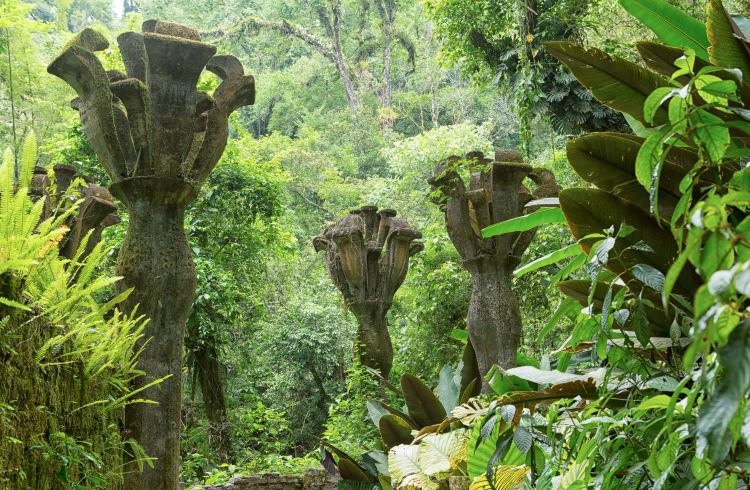
Merida
Merida’s position on the Yucatan peninsula gives it a tropical Caribbean atmosphere which contrasts with most of Mexico’s colonial cities. With its palm trees and humidity, it reminds me more of Havana or San Juan than Mexico City.
In many ways, Merida symbolizes the hybrid nature of Mexico. On the one hand, the Maya population of the region has ensured that its people’s dress and food have a clear indigenous influence. On the other, the architecture of its center feels very Spanish and it has firmly embraced European culture. Its streets are lined with sculptures, and it's home to museums, art galleries, and even an opera house.
Being the closest colonial city to the resorts of Cancun, it does attract large groups of visitors. The crowds are smallest between June and September, making this a good time to visit – as long as you don’t mind the increased humidity. - Max Serjeant
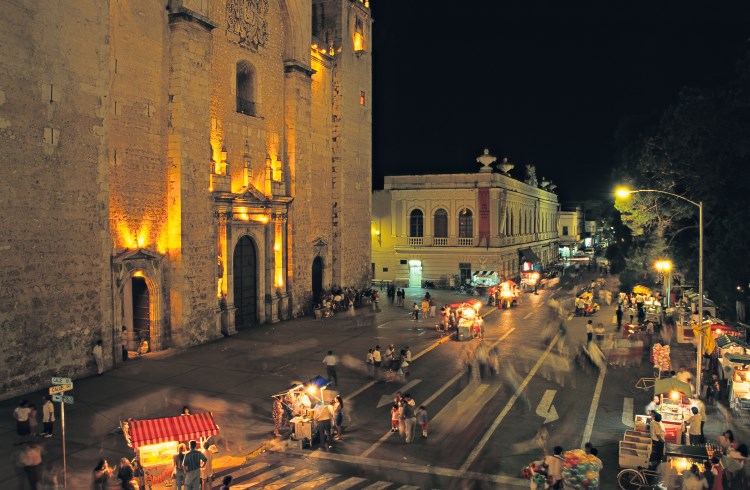
San Cristóbal de las Casas
Set at 7,200ft (2,200m) above sea level and surrounded by misty, pine-covered hills, San Cristóbal de las Casas is one of Mexico’s most attractive cities. Its historic center is filled with cobbled streets, mansions with red-tiled roofs, and ornate churches, some dating back to the 1500s.
Among the highlights is the Baroque, pale pink Santo Domingo de Guzmán church, whose candle-lit interior is an evocative place, regardless of your religious beliefs. Beyond its colonial architecture, San Cristóbal is the cultural hub of the southern state of Chiapas and its bustling markets offer an array of local crafts, most notably some exquisite textiles. Much of the center is pedestrianized, and there are scores of vaguely bohemian cafes and bars in which to while away the hours. Known to locals as Jovel, the city is also an ideal base for exploring the nearby indigenous Tzotzil Mayan villages of San Juan Chamula and San Lorenzo Zinacantán. - Shafik Meghji
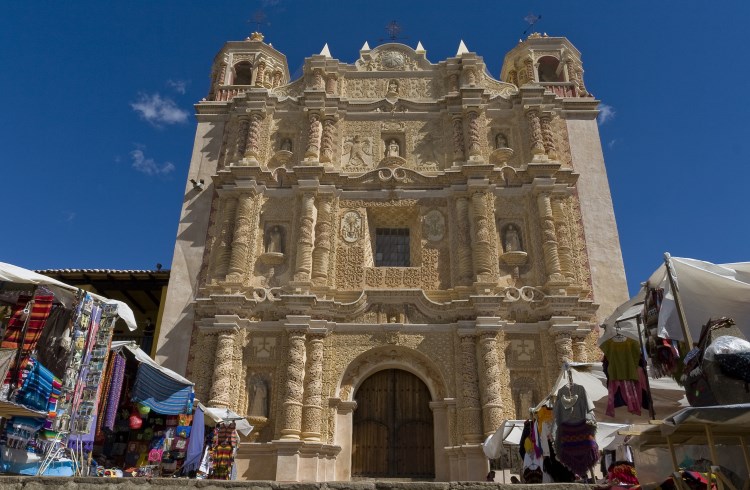
Related articles
Simple and flexible travel insurance
You can buy at home or while traveling, and claim online from anywhere in the world. With 150+ adventure activities covered and 24/7 emergency assistance.
Get a quote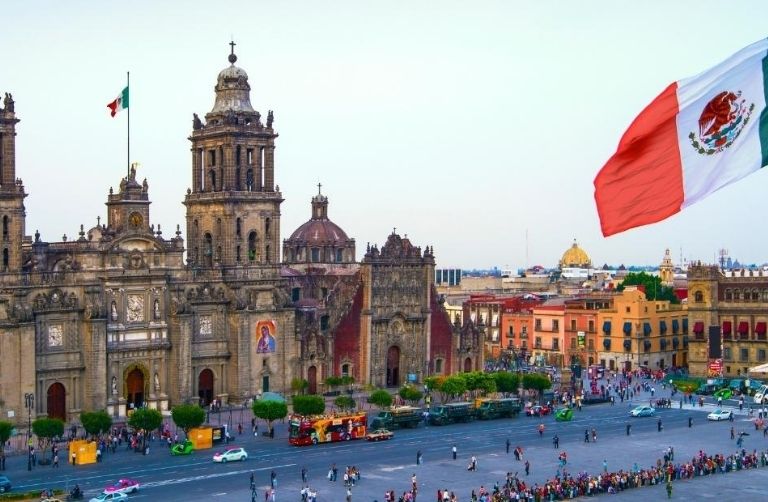
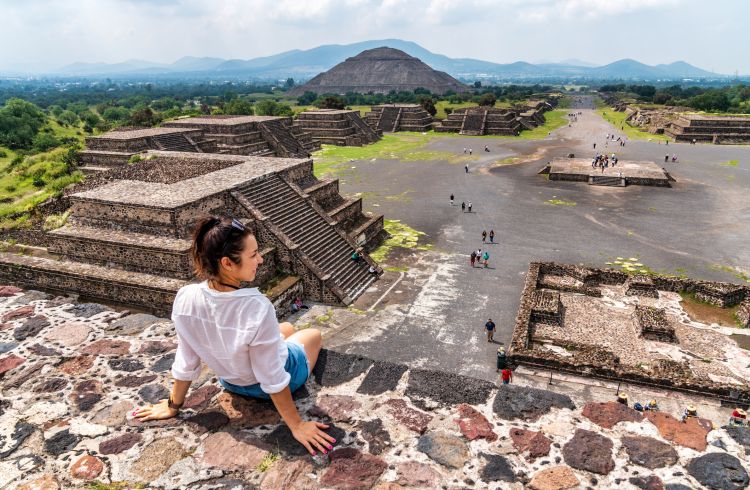

1 Comment
Well written and certainly is an enticement to visit these cities.....especially Queretaro.